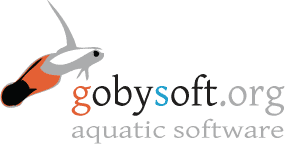Dr. Toby E. Schneider
Position: Oceanographic Engineer
Curriculum Vitae: CV
Email, phone, etc. see Contact
Publications profile: Google Scholar
Current research
I currently design systems typically involving autonomous vehicles (ocean robots) to pursue a number of scientific objectives. My research focuses on the interplay of marine digital communication and vehicle autonomy.
Acoustic communications on autonomous vehicles
Robust and relatively high throughput communications between vehicles is essential for multiple node collaboration (for a number of widely different tasks ranging from target tracking to geological surveying).
- { Conference paper and presentation: The Dynamic Compact Control Language Version 3. IEEE/MTS OCEANS 2015 / Genova, Italy / May 2015 }
- { Paper: A State Observation Technique for Highly Compressed Source Coding of Autonomous Underwater Vehicle Position. IEEE Journal of Oceanographic Engineering, October 2013 }
- { Paper: Model-Based Adaptive Behavior Framework for Optimal Acoustic Communication and Sensing by Marine Robots. IEEE Journal of Oceanographic Engineering, July 2013 }
- { PhD thesis: Advances in Integrating Autonomy with Acoustic Communications for Intelligent Networks of Marine Robots. Joint Program in Applied Ocean Science & Engineering at the Massachusetts Institute of Technology and the Woods Hole Oceanographic Institution. }
- { Invited conference paper and presentation: Goby-Acomms version 2: extensible marshalling, queuing, and link layer interfacing for acoustic telemetry. 9th IFAC Conference on Manoeuvring and Control of Marine Craft / Arenzano, Italy / September 2012 }
- { Conference paper and presentation: Approaches to improving acoustic communications on autonomous mobile marine platforms. UComms 2012: Underwater Communications: Channel Modelling and Validation / Sestri Levante, Italy / September 2012 }
- { Invited conference presentation: Pragmatic model-based adaptation for optimal acoustic communication and sensing on autonomous marine vehicles. Acoustical Society of America / San Diego Meeting / November 2011 }
- { Unpublished working paper: Goby-Acomms: A modular acoustic networking framework for short-range marine vehicle communication. }
- { Presentation: pAcommsHandler: Acoustic networking in MOOS with the WHOI Micro-Modem. MOOS Developers and Working Group Meeting / Cambridge, MA / August 2010 }
- { Conference paper and presentation: The Dynamic Compact Control Language: A compact marshalling scheme for acoustic communications. IEEE OCEANS 2010 / Sydney }
- { Presentation: Improving underwater vehicle communication in the littoral zone through adaptive vehicle motion. Acoustical Society of America / Portland Meeting / May 2009 }
- { Presentation: 1.29.09 ME Qualifying Examination – Littoral underwater acoustic tracking using collaborating autonomous ocean craft: improving communications through dynamic encoding and adaptive vehicle motion }
Command and control of hetereogenous vehicle networks
Commanding multiple vehicles of different types by a single operator requires a unified software infrastructure and abstraction. We have demonstrated successful field operations with a mixture of assets by combining MOOS-IvP (for autonomy and abstraction), geov (for visualization), and goby-acomms (for acoustic communications).
- { Conference Paper: CoExploration for Adaptive AUV Survey. Lindzey, L., Vandor, I., Schneider, T., Kaiser, C., Jakuba, M. IEEE AUV / Singapore / September 2022
- { Paper: Unified Command and Control for Heterogeneous Marine Sensing Networks. Journal of Field Robotics, November/December 2010 }
Graduate Work
MIT/WHOI, Joint Program in Oceanographic Engineering
- { PhD thesis: Advances in Integrating Autonomy with Acoustic Communications for Intelligent Networks of Marine Robots. Joint Program in Applied Ocean Science & Engineering at the Massachusetts Institute of Technology and the Woods Hole Oceanographic Institution. } (advisor: H. Schmidt)
Much of my graduate work continues into the present, and is thus listed above. Here are a few projects from my time as a graduate student that I am not actively pursuing:
Adaptive oceanography
- { Conference paper and presentation: Autonomous surface craft provide flexibility to remote adaptive oceanographic sampling and modeling. MTS/IEEE OCEANS 2008 / Quebec }
- { Presentation: 10.31.07 acoustics seminar (MIT) – adaptive sampling background and preliminary results from PN07 }
Cluster autonomy for target tracking
Single vehicles, regardless of the sophistication of their sensors, are inherently limited in their ability to detect and track multiple targets. a target could be a whale or a terrorist submarine, for example.
Thus, in these situations, a cluster of vehicles working together to localize and track targets over a region of ocean can be useful. while even a single robot can be tricky to program, a new set of challenges emerge when multiple robots must work together (think of preschoolers first interacting with other children).
We have developed and are studying a “zone defense” (think basketball) system of target tracking that involves multiple vehicles collaborating without sharing information beyond their positions, as network bandwidth is extremely limited in the ocean environment.
- { Conference paper and presentation: Cooperative autonomy for contact investigation. IEEE OCEANS 2010 / Sydney }
- { Presentation: 8.07.09 NURC Visiting Research Programme: Ship protection in a busy harbor using multiple unmanned surface vehicles }
- { Google Earth KMZ file: 8.07.09 NURC Visiting Research Programme: supplement to talk }
- { Presentation: 4.27.08 laboratory meeting – cluster autonomy background and preliminary results from CCLNET08 and simulation }
- { Video: 4.27.08 laboratory meeting – supplement to talk [13.0 MB] }
Undergraduate Work
Williams College, Department of Physics
Undergraduate honors research in physics (2006-2007): Precision diode laser spectroscopy of thallium towards the measurement of time reversal-violating but parity-conserving (TOPE) forces. (P. K. Majumder)
- { Thesis: Precision phase shift spectroscopy in thallium [4.5 MB] }
- { Poster: Precision spectroscopy in thallium }
- Undergraduate summer research in physics (2005): Investigations of picosecond soliton pulses in an all fiber laser (J. Strait).
Connecticut Agricultural Experiment Station
- Summer research assistant in the department of plant pathology and ecology (2004): Quantifying aerial dispersion of maize (Zea mays) pollen towards a model of temporal and spatial separation necessary for complete isolation of genetically modified (GM) maize. (D. E. Aylor).
